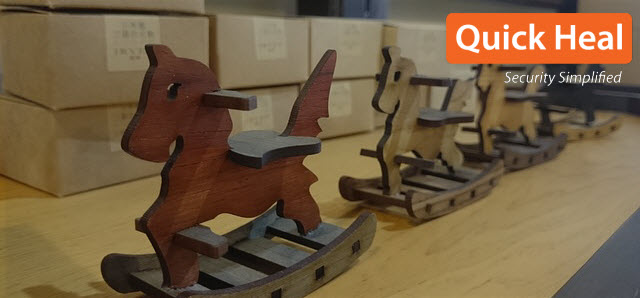A technical analysis of the Java RAT (Remote Access Trojan) Malware

Remote Access Trojans are programs that allow attackers to gain unauthorized access to a targeted computer without the victim’s knowledge. Java RAT malware is a Trojan-Dropper written in Java. It is designed to steal passwords, access files, for keylogging (recording what the user types on the keyboard) and for screen-capture. Information collected by a RAT is forwarded to a remote server controlled by the attacker.
Distribution Method
A Java RAT malware arrives via spam emails that contain malicious attachments (fig 1).

Fig 1
How Java RAT gets into a system
Once a JAR file is executed, it drops a copy of itself onto the below path with the name ‘LyOCtxhwRyz.yrDUql’
Path: %userprofile%\ YzQqKjGoxHz(Hidden Folder)
For example, C:\Users\Public\YzQqKjGoxHz

Fig 2
The malware drops the following files:
C:\Users\Public\YzQqKjGoxHz\ID.txt
C:\Users\Public\AppData\Local\Temp\OlfYXmVqfL9024669788070560515.reg
%temp%\Retrive2638932198378221530.vbs
%temp%/\ _0.354484486304158635925511204328476438.class
%Application Data%\Oracle\ (Contains copy of files from java installation folder)
It creates the following folders:
C:\Users\Public\YzQqKjGoxHz (Contains copy of actual malware i.e JAR file)
C:\Users\Public\fUTkALeaTxM
The below registry entry dropped by the malware is used to launch itself every time the system boots and download the executable file to infect the system.

Fig 3
The malware adds the below registry entries to disable security solutions and different analysis tools.
[HKEY_LOCAL_MACHINE\SOFTWARE\Microsoft\Windows NT\CurrentVersion\Image File Execution Options\procexp.exe]
“debugger”=”svchost.exe”
[HKEY_LOCAL_MACHINE\SOFTWARE\Microsoft\Windows NT\CurrentVersion\Image File Execution Options\wireshark.exe]
“debugger”=”svchost.exe”
[HKEY_LOCAL_MACHINE\SOFTWARE\Microsoft\Windows NT\CurrentVersion\Image File Execution Options\SCANNER.EXE]
“debugger”=”svchost.exe”
Quick Heal Detection
Quick Heal real-time protection detects the JAR file and its component as ‘Trojan.JAVA.Agent.JRAT’ and ‘Trojan.JAVA.Agent.JJ’

Fig 4
Security measures to stay away from Java RAT
- Do not click on links or download attachments that arrive in emails from unwanted or unexpected sources.
- Apply recommended security updates for your computer’s Operating System and all other programs such as Adobe, Java, Internet browsers, etc.
- Use an antivirus software that gives layers of protection against infected emails and malicious websites. Keep the software up-to-date.
- Take regular backups of your important data.
- Free software, especially those with unverified publishers are usually used by attackers to spread malware. Always go for genuine and licensed software.
ACKNOWLEDGMENT
Subject Matter Expert
- Anita Ladkat | Quick Heal Security Labs
1 Comment
Hi ,
Thanks for sharing information.
One little suggestion .
Suspicious attachment should get block through Email Protection for early resolution. !!!